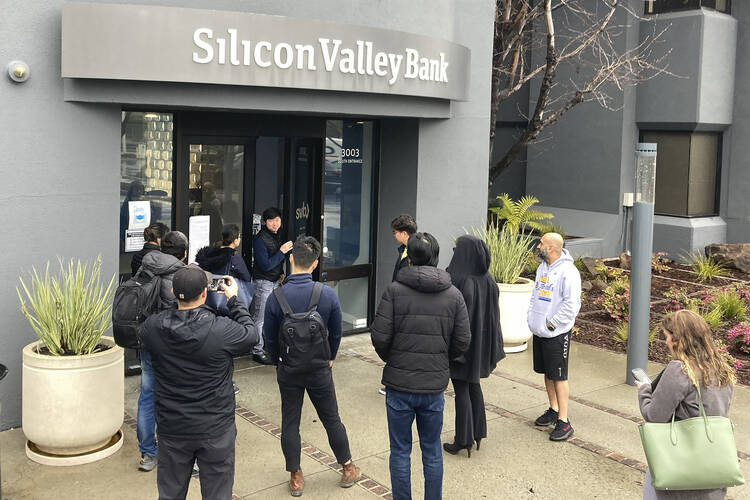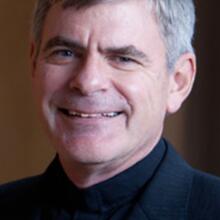This year we are seeing yet another U.S. banking crisis, following the collapse of Silicon Valley Bank. Paraphrasing the song in “My Fair Lady,” we might ask, “Why can’t bankers learn to behave?”
We have to remember that banking crises are part of the American historical landscape. One of the reasons we went off the gold standard in 1914, along with the creation of the Federal Reserve System, was to reduce the number of these banking crises, which were so frequent in the late 19th and early 20th centuries. After the severe banking crisis of 1907, public opinion turned in favor of the creation of the Fed so that we would once again have a national bank that could be a “lender of last resort” to banks—and so that depositors would not be left in the cold when banking managers lost their deposits with bad lending.
The creation of the Fed did not eliminate recurring banking crises in the United States.
The creation of the Fed, however, did not eliminate recurring banking crises in the United States. We had the banking crises leading to the Great Depression; crises related to Latin American countries’ debt in the 1980s; the savings-and-loan crisis, also in the 1980s; and the global financial crisis of 2008 caused by the proliferation of mortgage-backed securities. (Keep in mind that banking crises are not uniquely American. The Mexican “tequila crisis” of the mid-1990s, as well as the “Russian flu” and “Asian flu” of the late 1990s, were major banking crises caused by the sudden and massive influx of foreign funds into Mexico, Russia and Southeast Asian countries by foreign investors, when there was little or no regulatory framework in place. These countries received massive bailouts from the International Monetary Fund, with support from Lawrence Summers at the U.S. Treasury, in an effort to stave off a global financial meltdown.)
The Federal Reserve and the Federal Deposit Insurance Corporation (created in 1933) gave assurance to depositors that their funds would be safe even if bank managers make bad loans. But this has created a moral hazard situation for banks. Since depositors are protected even in the case of many bad loans, why not hold risky assets, as Silicon Valley Bank did with government bonds whose value was falling? For bank managers, this became a no-lose game: Heads, I win (when the risky assets make good returns), and tails, the taxpayer loses (when the assets go bad and depositors still need to be paid off).
Since depositors are protected even in the case of many bad loans, why not hold risky assets, as Silicon Valley Bank did?
Given the presence of deposit insurance, there is little incentive for depositors to monitor bank lending. One fix for this situation, which the Swiss-based Bank for International Settlements developed in response to the global financial crisis of 2008, are Basel III classifications. Under this system, Globally Significant International Banks (GSIBs) are classified in five “bins.” The higher the bin, the higher the requirement for capital asset ratios. These ratios recommend that banks have larger capital (outstanding shares) relative to their “assets” (total lending). Shareholders, by definition, are residual claimants in an enterprise, meaning they are the last ones to be paid off if the enterprise goes into bankruptcy. The idea behind the Basel III accords on global standards for the regulations of banks is that with more shareholders (who have more skin in the game), there will be better monitoring of bank managers and their risk-taking practices.
Bank regulation is now a growth industry around the world, and most central banks have large financial stability departments. But we should be under no illusion that the moral hazard situation will diminish. Even with Basel III accords in place, we have seen major fines of global banks around the world over the past decade. The Bank of America, for example, paid out over $60 billion over the past 10 years across 124 separate fines. For most of the banks, paying out such fines is simply a usual cost of doing business.
The Bank of America paid out over $60 billion in fines over the past 10 years. For most of the banks, paying out such fines is simply a usual cost of doing business.
One proposal, from Alan Blinder of Princeton, is that the Fed, the F.D.I.C. and the Office of Comptroller of the Currency (the three major regulators in the U.S. federal system) should regulate like hawks, and come down like a ton of bricks in cases of malfeasance at financial institutions deemed “too big to fail.” For the others, depositors would be on their own, and it is their job to watch the bank managers or to put their deposits in the “safer” larger banks.
Can this proposal work in the United States? As Patrick Honohan, former governor of the Central Bank of Ireland, pointed out to me, in this case of harsh regulation of the top 100 banks, and “sink or swim” for the rest of the banks, the 101st biggest bank could fall into a major crisis and be found to be “too big to fail,” and then we will see another massive federal bailout.
The policy of the Reserve Bank of New Zealand is even more extreme than Mr. Blinder’s. Depositors are told that they are on their own, they cannot count on the Reserve Bank for bailouts, and they should find ways to supervise the banking managers themselves, with their own legal resources. In other words, let the misbehaving bank lenders face the wrath of their own depositors. The Reserve Bank is there only to keep inflation low, full stop.
We have to face the brutal fact that banking cannot be and will never be perfectly regulated, just as crime prevention cannot work perfectly, even with stricter gun control and more police on the streets. With deposit insurance and the “lending of last resort” by the Federal Reserve, the system is prone to moral hazard and recurring crises due to mismanagement in lending practices. In banking, as well as in crime, we can take small steps akin to gun control or tougher sentences.
Extending this analogy, perhaps a key error in the wake of the global financial crisis of 2008 is that only a few American bank executives involved in this crisis were prosecuted and sent to federal prison. Maybe if many more went to jail, the current generation of risk managers would start to take the risk of a long-term jail sentence into their “risk-return” calculus when they engage in questionable lending practices. Such managers are used to paying out large fines, but can they also get used to facing long-term jail sentences as well?








